Céad míle fáilte, a hundred thousand welcomes to H A G! I’m Ali Isaac, and this email comes to you from the intersection of female senescence and Irish landscape, both mythical and natural. My book, Imperfect Bodies, will be published by Héloïse Press in the spring of 2026.
Child of Summer
Until a couple of years ago, I always thought I was a Summer person. My body shrank from the cold, I feared the dark, and I could barely enjoy the gifts of Summer because I was already dreading the onslaught of Winter. I drank in the sunlight, revelled in the feel of warmth on my skin, but in the climate of the northern hemisphere, such revelry was often over before it had properly begun, and I was living in a near constant state of depression that I now know was Seasonal Affective Disorder (SAD).
With Winter Comes Renewal
I’ve managed to change that around. It wasn’t easy, but it was worth it not to waste the greater part of each year in fear of its conclusion. Now, as Samhain draws near, I can’t wait for my annual journey into the cave at Oweynagat. For me, this marks the beginning of winter, it is how I adjust and orient myself in the cycle of seasons and order of change. The experience grounds me, and has become a ritual of acceptance and rebirth. I feel utterly changed and renewed, every time.
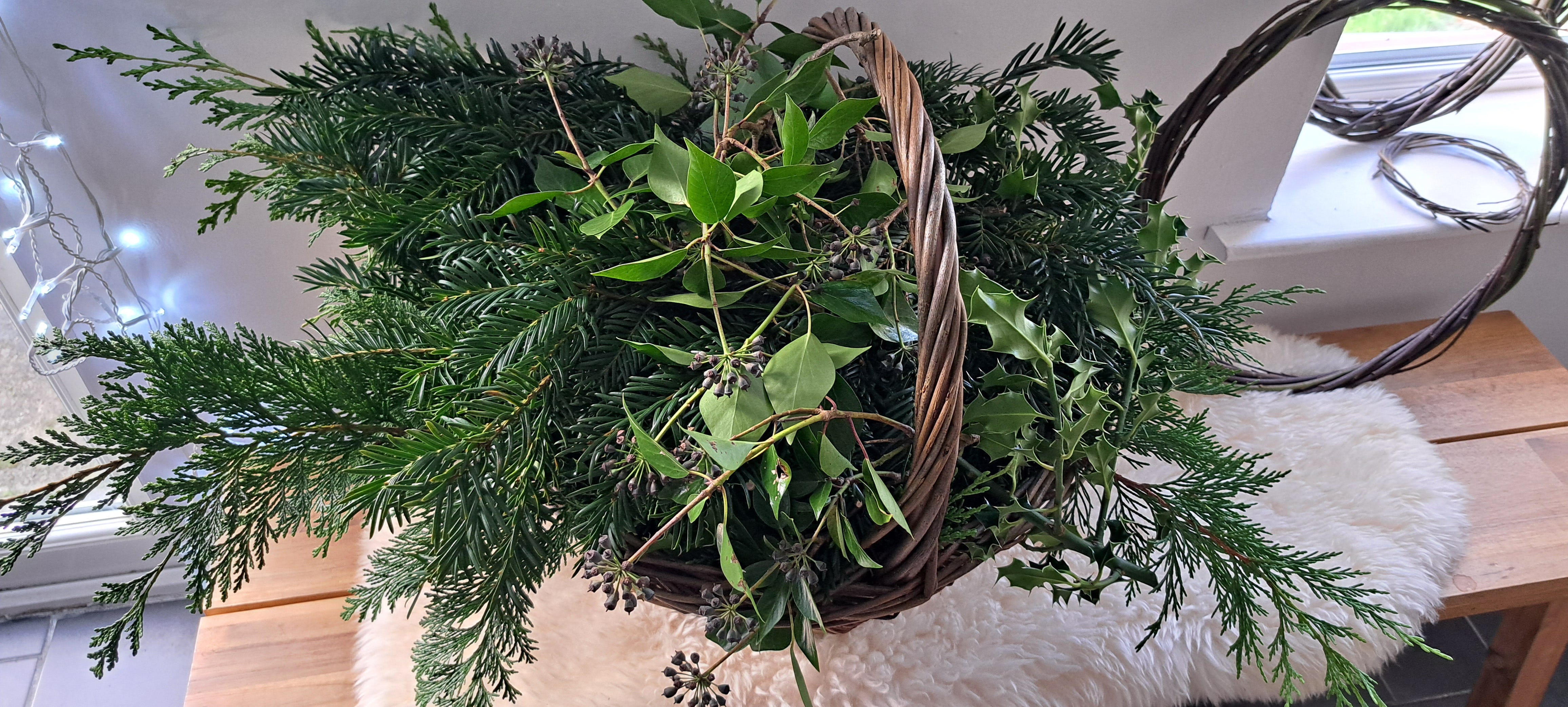
Guardians of the Seasons
It seems strange that looking back over the last two years, there has been a reversal. It is now the summers that send me into malaise. July and August 2023 threw me into a horrible period of feeling low, empty, devoid of any emotion or energy at all. This year, it happened again. You may remember my recent newsletter about absence and fallowing. I used to experience depression in winter, now it’s in the summer. It’s almost like going to sleep and coming alive again as the Cailleach stirs and enters her season.
It may also seem strange, now that we are almost in touching distance of the winter solstice, that my thoughts are already turning to Brigid, and to Imbolc. But the way I see it, the Cailleach and Brigid are like the two halves of a coin; there is a different face on each side, but they are one and the same. As I work in my garden, making space for seed and bulb and shrub, I can’t help but consider the return of light and warmth that will coax these tiny bundles of dormant energy into bud. I have welcomed winter, but I am also looking forward to the gifts of spring.
Have you ever noticed how the Cailleach and Brigid work together to nurture the land’s fertility? At Samhain, the H A G brings the cloak of winter, sending all to sleep.
Science has shown how lower temperatures and darkness at night help us to fall asleep, but although we are not fully conscious, we are still busy. Beneath the still exterior, we dream, our brains store and organise information, our nerve cells reset, our bodies conserve energy, repair cells, release hormones, remove toxins.
In the same way, while the land around us seems to die off in winter, there is so much activity going on beneath our feet preparing for the great renewal of spring. Did you know, for example, that many wild seeds cannot germinate without first experiencing winter cold? It’s one of the reasons why warmer winters can be so problematic.
At Imbolc, Brigid returns to us, drawing back the cloak of winter so that the sun can warm the soil, coaxing all the little green shoots to the surface where they photosynthesise and flourish, while the Cailleach goes to her rest until Samhain.
This partnership reminds me of the dualism of the Holly King and the Oak King. At the intersection of their seasons, they fight each other for dominance. Of course, they do. Eye roll. But Brigid and the Cailleach go quietly about their business, supporting each other and the greening of the land, working together through serving and loving the land and all that lives on it and in it, not for owning power over it. Protection, not aggression.
The old woman, the young woman. The menopausal woman, the fertile woman. The crone and the mother. Both guardians of the land. Serving and facilitating, not ruling. I think this is so important but often overlooked. Or deliberately buried.

Goodbye, Christmas
A strange thing happened last week. I was putting up the usual Christmas decorations that I’ve been displaying every year since my sons were babies, each piece soffused with memories, the eclectic collection a jumbled treasure chest of Christmases gone by. But wherever I placed them, they felt wrong. I moved them from surface to surface, room to room, and after a couple of days, I took them all down and put them away. My sons had outgrown them years ago, and finally, it seems, so had I. All that remain are the candles, two sets of fairy lights, a winter wreath on the door, and the tree.
I’ve never been religious, was brought up in an atheist household. Whatever we choose to call it, I think it’s important to bring joy and love and fun into the dark cold half of the year, just when we need it most. What ‘Christmas’ means to me, is time for our family to take a break together from the routine; to relax, eat good food, soak up a few glasses of wine, enjoy each other’s company, watch movies and play games, and treat each other with gifts. We celebrate the season by gathering round the fire each evening, and it’s a celebration of togetherness and love.
This year, I’m letting go of the traditional sense of Christmas I have always conceded to, and celebrating Mid-Winter instead. It feels more honest. The evergreen wreath on the door, in light of all the world’s troubles, feels fitting, not as a symbol of grief, but as a sign of hope, strength, resilience and regeneration. I made it and hung it up just in time for it to be battered by Storm Darragh. Fortunately, it stayed in place, although it’s looking a little worse for wear. If that isn’t a clear message, I don’t know what is.
No Time for Hibernation
So, what is this old H A G up to this winter? I’m enjoying experimenting with the wild self-planted grey/ goat willow that I coppiced last year. I have woven a few weath bases green to see how the willow shrinks, and so far they are holding their shape. I am also drying some for soaking and weaving later to see how much it loses its flexibility. I really like its dark brown colour as it dries. I am also loving the red dogwood stems, they are so vibrant in amongst all the green. I didn’t coppice them last year, though, so the branches are too short to really be useful… you live and learn. I am also in the midst of incorporating some wild foraged materials into my macrame work… who knew ‘macraweave’ was a thing? I didn’t until recently, now I’m keen to give it a go.
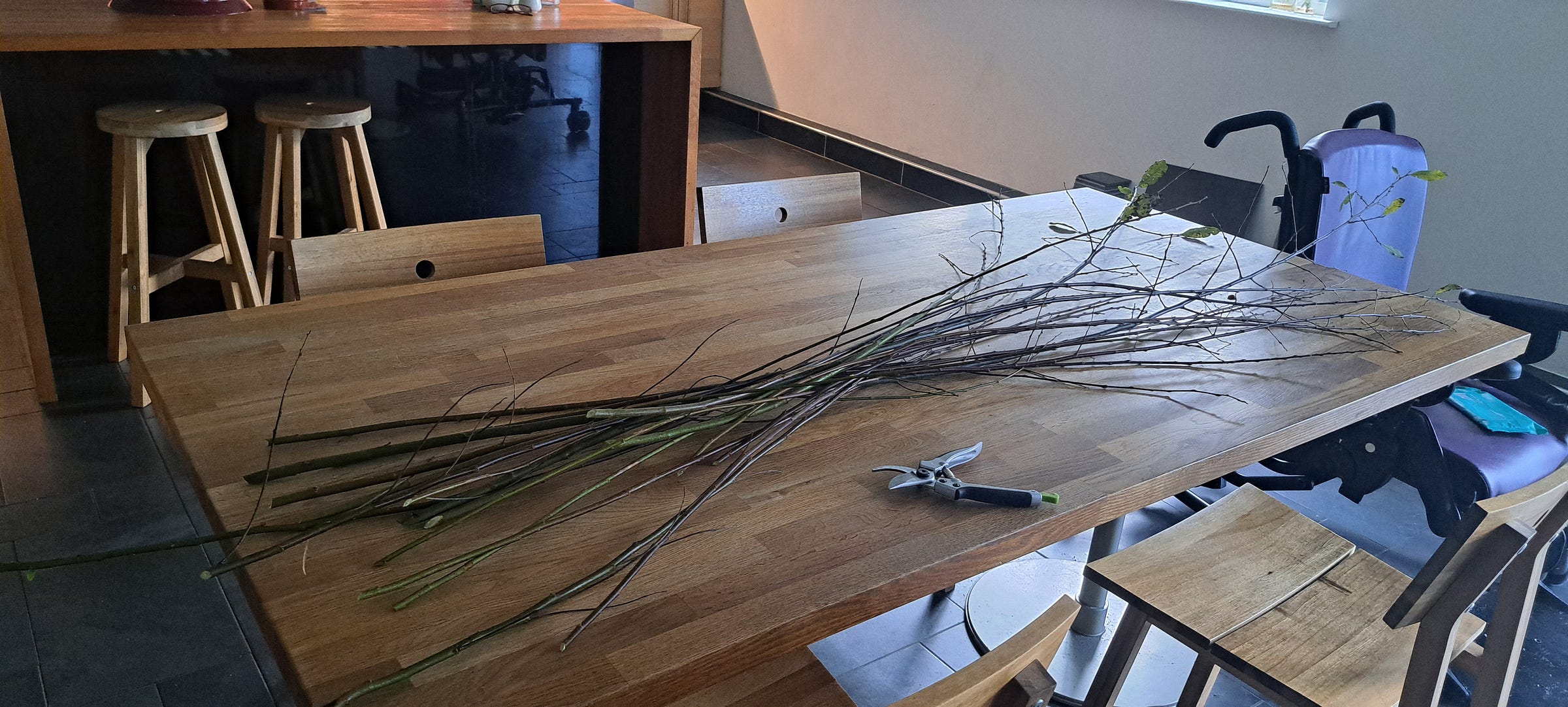
Faithful to the Land
During the summer, I collected some seed from local wildflowers in my neighbourhood that I hope to grow in my garden in the spring. In order for my house to be built, half the hillside was scraped away, and so the topsoil with its existing seedbank was lost. I think that could be why so few wildflowers have established naturally in my garden. I was pleased to see a glorious swathe of rosebay willowherb colonise one of my bankings this year, and beside my patio, some delicate cuckoo flower and self heal bloomed. The dandelions are rampant, of course!
But I think this bit of land in my care needs a bit of a helping hand, so I am quite excited to see how my wildflower seed plans work out. There are certain plants that I am really looking forward to working with next year as I develop my herbal knowledge. I’m also planning on using my excess willow rods to create edging for my borders and planting areas to keep my new plants safe from accidental mowing.
This year, local farmers were particularly brutal in the management of their hedges, spraying and cutting back very early on before much seed could be set. As a result, there’s not many seeds or berries available for the birds this winter, and even the ivy berries, which were already fat and ripe this time last year, are not quite ready. With so little seed going to ground, there will be fewer plants appearing in the spring. I generally put out seed and fat balls for the birds in winter, but I always have mixed feelings about it, because I don’t want them to become too dependent on it. However, this year there’s very little else, and there are an unusually high number and wide variety of birds visiting my garden at the moment. I think the Cailleach would want me to do whatever I can to keep them alive.
Yesterday, as I drove along the N3 into Cavan, I noticed that several kilometres of old hedges bordering the road had been pulled up and replaced with wood and metal fences. Not only is it ugly, but that safe habitat and food source that all the wild creatures relied on for their survival is utterly destroyed. Where will they go now? How will they survive?
It’s senseless, and heartbreaking, and it’s why we need to create safe oases of wilderness in every little patch we can.
We must be both the Cailleach and Brigid.
Start where you are. Use what you have. Do what you can.
- Arthur Ashe, tennis champion, social activist, author


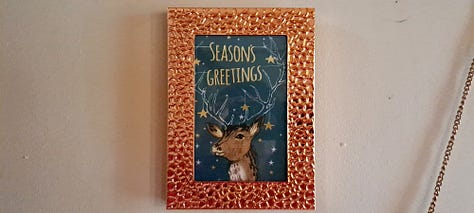
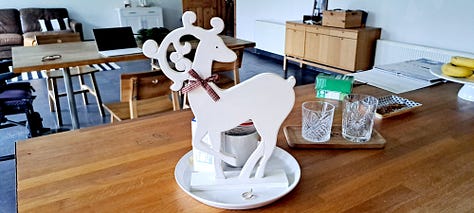

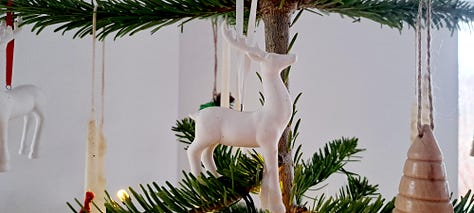
How do you celebrate this time of year? Do you hibernate or get active in Winter? Click the button and send me a message - comments are sadly unavailable for this post, for reasons best known to Substack alone. I really want to hear from you, that’s why I’m here in the first place!
Sending you Grá Mór - much love - and seasonal blessings!
Keep reading with a 7-day free trial
Subscribe to H A G to keep reading this post and get 7 days of free access to the full post archives.









